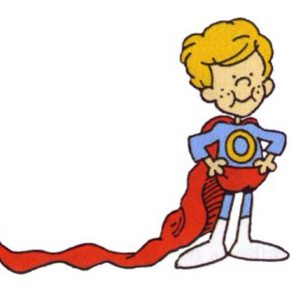Coming to Terms with the Complexity of Indexed Universal Life Illustrations
After its introduction in the late 1990s, Indexed Universal Life Insurance began a steady climb over the following decades to eventually account for 20% of held policies in the United States. Remarkably, after hitting the $1 billion sales mark in 2011, sales doubled over just the next 8 years! Current figures (which are 1 year behind) have IUL sitting at $2.3 billion in sales by the end of 2019. This rapid growth did not occur in a vacuum and most certainly was not without controversy. As the industry comes to grips with AG49-A and its impact on IUL illustrations, it is more important than ever that producers stay informed when it comes to illustrations and options regarding these popular policies.
Indexed Universal Life Filled the Risk/Reward Gap
The success of IUL policies is due in large part because of the gap that they filled between traditional Universal Life insurance and Variable Life insurance. For policyholders whose primary concern is tax-favored cash value accumulation but still want the security that a death benefit provides, IULs can make for a perfect fit.
With the tax-free death benefit and cash accumulation opportunities indirectly tied to an index such as the S&P 500, IUL’s could compete well with traditional Universal Life policies. As there is a 0% growth floor on the indices that the IUL mirrors, there is no risk to the policyholder of diminishing cash value in the event of a market downturn. This allowed IUL’s to compete with Variable Life Insurance and its potentially negative returns.
Creating an insurance product with a supportable higher rate of return than traditional Universal Life while eliminating the market risk associated with Variable Life has been the key to IULs success.

Zero is Your Hero
The unique proposition of IULs that allow for the policyholder to maintain the cash accumulated in their policy is commonly known as ‘zero is your hero’. If the index that the policy is mirroring underperforms, the cash value of the policy neither grows nor shrinks. It remains flat. In this way, policyholders can participate in the gains of the market without suffering the losses.
In order for an IUL to be supportable from a financial perspective, caps and participation rates are imposed on the gains. The cap is a limit on the gains and the participation rate determines how much of the gains beneath the cap the policy can earn.
The difference between the actual market gain and the policy’s allowable earnings helps support the policy when the market bottoms out. Caps are typically in the 10%-12% range. For example, if the market soars upwards by 15%, and the policy cap is 10%, then the policy enjoys 10% returns and the remaining 5% can help fund the policy when the market takes a dive. The premiums cover the cost of the insurance itself along with associated fees. The participation rate creates more financial stability to help support the policy in volatile markets.
How Does an IUL Support Itself During Prolonged Market Decline?
In reality, a prolonged market decline would ruin IUL sales over a long enough period of time. However, history shows us that the indices generally trend upward over the years and enjoy more years of substantial growth and fewer years of decline.
The S&P 500, for example from the end of the depression (1937) through 2017 had 61 positive growth years compared to only 19 negative growth years. Additionally, among the positive years, there were 3 times as many years of double-digit growth compared to single-digit growth. This clearly supports the concept that an IUL can support itself over the long haul.
Fierce Competition Muddied the Illustrations
In an effort to outduel the competition, insurance companies turned to creative illustrations to make their IUL policies stand out amongst a suddenly crowded field. With ever-growing complexity, producers and policyholders alike had a difficult time parsing out the actual costs and benefits of these wild illustrations and eventually, oversight had to be established to deal with the resulting obfuscation.
The problem arose as carriers began adding higher than supportable fund crediting rates and leveraged loan interest rates in their illustrations. Each carrier was trying to make their version of an IUL more attractive to the buyer. As the gold rush fever in the IUL market grew, many of these illustrations were either inaccurate or not supportable financially. It became clear that regulation was needed.
Regulation Attempted to Clarify the IUL Market
In 1995, the NAIC set forth guidelines to force carriers to simplify their illustrations regarding IULs and limited their ability to add caveats and footnotes. They ordered that illustrations must have well-defined terminology that a layperson could understand. What they had not taken into account at the time, however, was that carriers would alter loan rates and fund crediting rates to the policies to make them more attractive.
In 2015, the NAIC revisited the IUL illustration problem to deal with the unsupportable additions. They set limits on policy loan leverage rates and crediting rates. They also required disclosures to be added alongside the illustrations to help the consumer better understand what they were purchasing.
What’s important to note here is that AG49 only limited what carriers were able to illustrate. The policies themselves were relatively unchanged and were still able to perform at the changed rates.
With the illustrations for IULs under tighter scrutiny, the industry had to get creative once again. The advent of bonuses and multipliers (which had not been addressed in AG49) were added to illustrations in order to position one carrier’s IUL over their competitors. These bonuses and multipliers were also prone to create an unsustainable cash growth respective to the cost of the policy. Additionally, these numbers looked better on paper than they were actually able to perform. The murky ethics of these new illustrations created an even larger problem than what the NAIC was trying to address with AG49.
AG49-A: Change for the Better, at Least for Now
After the passage of AG49, and with the invention of new rate multipliers and bonuses, it was only a matter of time before the NAIC would need to once again intervene on behalf of the producers and consumers. Transparency was the key to this new regulation. AG49-A, which went into effect in 2020, curbed the ability to show the impact of multipliers and bonuses in the illustration. The thought was that by forcing the carriers to simplify their illustrations and removing the illustration of these new tools, the playing field for IULs would finally be leveled.
Not unlike the passage of AG49, AG49-A only regulated what the carrier was allowed to show on the illustration. Bonuses and multipliers are still being used from a policy perspective, they just aren’t allowed to use them as a selling point in their illustrations. How this will impact the industry is still playing itself out. But if there is one thing that we can all be certain about, it is that the industry will continue to evolve and push the envelope where illustrations are concerned.
We Want to Help Producers Deliver Clear and Accurate Guidance to their Clients
While we certainly support the objectives of the NAIC in bringing some order to this illustration problem, we would like to share our approach towards the producers who do business with us:
- We believe it is our responsibility to learn as much as we can from a company and industry experts about the product and illustrative processes and to make that knowledge available to the producer. In the case of IUL, we have had many sessions with the companies that offer IUL to better understand their product. Additionally, we subscribe to IUL Digest by Brett Anderson for additional information and consultation. We find Brett and his publication to be one of the best in the industry for 3rd party information in their area of expertise.
- To provide the producer and his or her client the best supportable information on the program they are looking at, we believe in the “Expectations of Reality” rather than “Expectations of Illustration”.
- Over our many years in business, we have found education and knowledge are invaluable to put the producer in the best position to provide his or her client with the best information possible to have them make the purchase decision based on the client’s needs.
- The primary responsibility of the BGA is to provide the producer with what he or she needs to provide the highest quality available service to their clients.
- Over our years in business, we have observed that not much changes in the oversight business. Something is developed and works but problems develop, regulators then get involved, more regulation, more confusion, and so on. For an agent to depend on themselves to develop the resources to address these complexities becomes very difficult, particularly when the producer wants to sell his client the best product from the best company.
- With the complexities inherent in IUL we suggest you work with someone who understands IUL to help you do the best job for your client and we offer our services.
As the landscape of our industry continues to shift around us, we look forward to helping you provide outstanding service to your clients.




